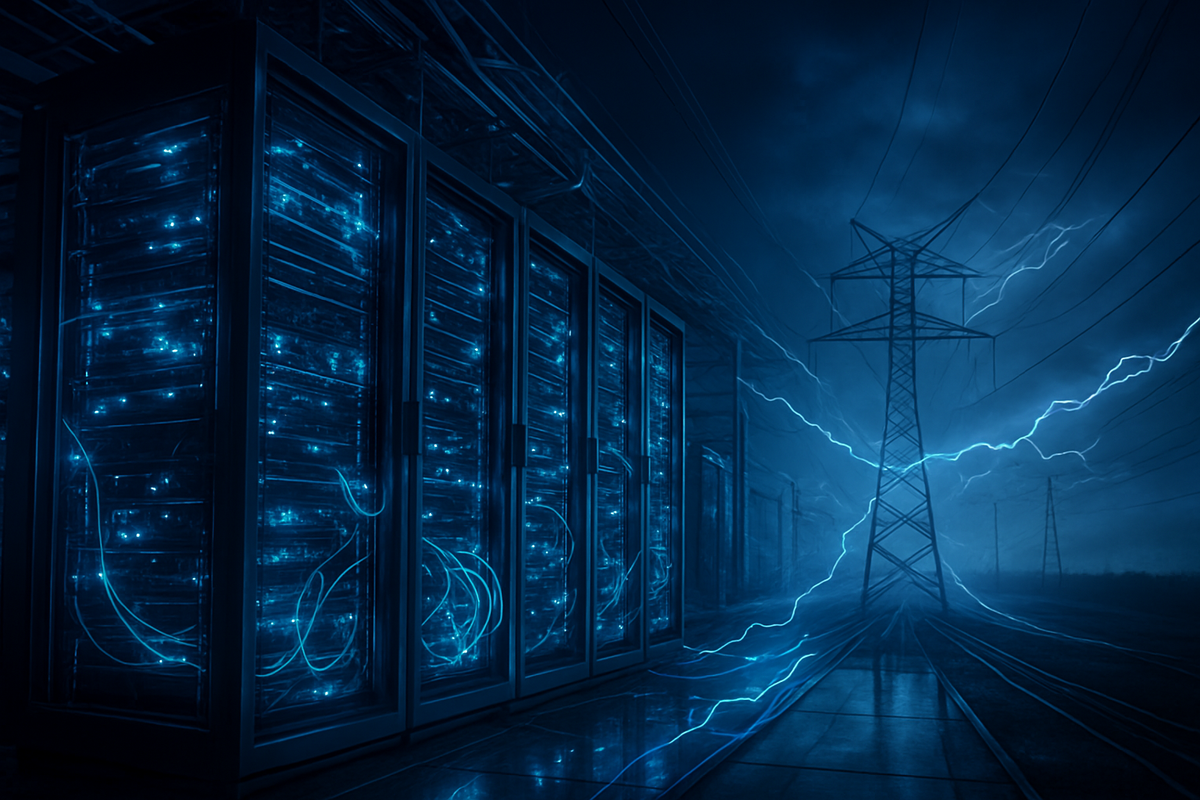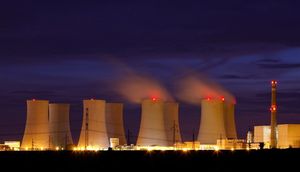
The relentless expansion of data centers, fueled by the explosive growth of artificial intelligence (AI) and the ever-increasing demand for cloud computing, is pushing global electricity grids to their limits and triggering a profound economic realignment. As of November 10, 2025, the digital infrastructure that underpins our modern world is on a collision course with energy markets, threatening higher electricity bills for consumers, straining aging infrastructure, and forcing unprecedented investments in power generation and delivery. This surge in power demand is not merely a technical challenge; it represents a fundamental shift in the energy landscape with far-reaching implications for industries, governments, and the daily lives of billions.
The Unprecedented Surge: A Deep Dive into Data Center Power Demands
The current trajectory of data center growth is nothing short of extraordinary. The United States alone, as of March 2025, boasts over 5,400 data centers, a number that continues to skyrocket. This expansion is heavily concentrated in strategic hubs like Northern Virginia, Chicago, Atlanta, and Phoenix, which are becoming epicenters of digital infrastructure. A key driver of this surge is the proliferation of hyperscale data centers—massive facilities often consuming 100 megawatts (MW) or more—projected to account for 61% of global data center capacity by 2030, a significant jump from 44% today. The power density within these facilities is also intensifying, with average rack density expected to climb from 36 kW per server rack in 2023 to 50 kW per rack by 2027, primarily due to the intense computational requirements of AI workloads.
Globally, data center power demand is projected to grow at a compound annual rate of approximately 16% from 2023 to 2028, an acceleration from the 12% rate observed between 2020 and 2023. This translates into staggering consumption figures: U.S. data centers consumed 176 terawatt-hours (TWh) in 2023, representing 4.4% of the nation's total electricity. This figure is forecast to reach 183 TWh in 2024 and an astonishing 426 TWh by 2030, marking a 133% increase. Some forecasts suggest even higher consumption, potentially reaching over 600 TWh annually by the end of the decade, accounting for up to 60% of total U.S. load growth from 2023 through 2030. Internationally, the picture is equally stark: global data center consumption, estimated at 200 TWh in 2020 and 460 TWh in 2022, is anticipated to hit a staggering 1000 TWh annually by 2026, equating to roughly 5% of the world's total electricity usage. Deloitte projects a doubling of global data center electricity consumption from 536 TWh in 2025 to 1,065 TWh by 2030, primarily driven by AI and blockchain technologies. Generative AI, in particular, is a significant energy hog, with model training consuming ten times the energy of typical cloud processes, and AI operations alone are projected to consume over 40% of the anticipated 96 gigawatts (GW) of global data center power by 2026.
The immediate market reactions to this unprecedented demand are already being felt. Electricity bills for consumers are on the rise, with a Carnegie Mellon University study estimating an average 8% increase in U.S. electricity bills by 2030, and potential increases exceeding 25% in high-demand markets like central and northern Virginia. In some regions, monthly power bills have surged by as much as 267% over the past five years. Capacity market prices, which ensure sufficient electricity supply, have seen dramatic spikes. For instance, in the PJM electricity market (covering parts of the Mid-Atlantic and Midwest), capacity prices for the 2026-2027 delivery year soared to $329.17 per megawatt-day, more than ten times the price for the 2024-2025 period. This surge is expected to add an estimated $9.3 billion price increase, translating to higher residential bills—for example, an estimated $18/month in western Maryland and $16/month in Ohio. These increased generation costs are typically passed on to all customers. Utilities, recognizing the growing importance of data centers as major customers, are increasingly discussing them in earnings calls, signaling a significant shift in their strategic focus.
Corporate Fortunes: Winners and Losers in the Power Play
The escalating demand for electricity from data centers is creating a clear divide between potential winners and losers in the corporate landscape. Companies positioned to benefit include major utility providers, renewable energy developers, and manufacturers of high-efficiency cooling and power management solutions. Conversely, businesses heavily reliant on stable and affordable energy, or those unable to adapt to new infrastructure demands, could face significant headwinds.
Leading utility companies, particularly those with robust transmission and distribution infrastructure and diversified generation portfolios, stand to gain substantially. Companies like NextEra Energy (NYSE: NEE), Duke Energy (NYSE: DUK), and Southern Company (NYSE: SO) are well-positioned to capitalize on the increased demand, as they are crucial partners in delivering power to these energy-intensive facilities. Their ability to secure long-term power purchase agreements with data center operators, coupled with opportunities for infrastructure upgrades and expansion, presents significant revenue growth potential. Furthermore, renewable energy developers and operators, such as Brookfield Renewable Partners (NYSE: BEP) and First Solar (NASDAQ: FSLR), could see increased demand for their projects as data center operators increasingly seek to power their facilities with cleaner energy sources to meet sustainability goals. Manufacturers of advanced cooling technologies and power management systems, essential for optimizing data center efficiency, will also thrive. Companies like Vertiv Holdings Co (NYSE: VRT) and Eaton Corporation plc (ETN) are poised for growth as data centers invest in solutions to mitigate their massive energy footprint.
On the other hand, companies with less diversified energy sources or those operating in regions with constrained grids could face significant challenges. Smaller businesses and households will bear the brunt of rising electricity costs, impacting their operational expenses and disposable income. Industries with high energy consumption, such as manufacturing or heavy industry, could see their competitive advantage erode if they cannot secure affordable power. Moreover, data center operators themselves, while driving demand, face immense pressure to secure reliable and cost-effective power, which could lead to increased capital expenditures and operational costs. Companies unable to innovate in energy efficiency or secure access to new power sources may struggle to scale their operations or maintain profitability in an increasingly power-constrained environment. The need for massive infrastructure upgrades, often passed on to ratepayers, could also create regulatory pushback, potentially impacting the profitability of utilities if rate increases are capped or delayed.
Broader Implications: Reshaping Industries and Policy
The surging demand for data center electricity is not an isolated phenomenon; it is a powerful force reshaping broader industry trends, influencing regulatory frameworks, and drawing parallels to historical energy shifts. This event is intrinsically linked to the accelerating adoption of AI and the ongoing global digitalization, which are creating an unprecedented need for computational power and data storage.
The ripple effects extend across numerous sectors. For instance, the semiconductor industry, with key players like NVIDIA (NASDAQ: NVDA) and Advanced Micro Devices (NASDAQ: AMD) producing the specialized chips that power AI, is experiencing booming demand. However, the energy intensity of these chips directly contributes to the data center power challenge. Similarly, cloud service providers such as Amazon Web Services (AWS) (NASDAQ: AMZN), Microsoft Azure (NASDAQ: MSFT), and Google Cloud (NASDAQ: GOOGL) are at the forefront of data center expansion, but they also face increasing pressure to demonstrate sustainable practices and secure vast amounts of clean energy. The concentration of data centers in specific regions, such as Northern Virginia, where they already account for a significant portion of local electricity consumption, is creating localized energy crises and grid strain. In Ireland, data centers account for over 20% of total electricity consumption, highlighting the acute regional impact.
Regulatory and policy implications are rapidly emerging. Governments and utility commissions are grappling with how to manage this escalating demand, ensure grid stability, and protect consumers from exorbitant price hikes. There is growing discussion around incentivizing renewable energy development, streamlining permitting processes for new transmission lines, and potentially implementing demand-side management strategies for data centers. The need for massive infrastructure investment—potentially over $500 billion in the U.S. alone by the end of the decade to provide an estimated 50-60 GW of additional data center capacity—underscores the scale of the challenge and the need for coordinated public-private partnerships. Historically, similar energy-intensive industrial revolutions, such as the rise of manufacturing in the late 19th and early 20th centuries, necessitated significant investments in power generation and distribution. However, the current pace of digital transformation and AI adoption is arguably unprecedented, demanding an even more rapid and comprehensive response to avoid widespread energy shortages and economic disruption. The shift towards cleaner energy sources, while vital for climate goals, adds another layer of complexity, as renewable energy projects often require more land and new transmission infrastructure.
The Road Ahead: Navigating a Power-Hungry Future
The path forward for the digital economy and energy markets will be defined by how effectively stakeholders adapt to the surging power demands of data centers. In the short term, we can expect continued pressure on wholesale electricity prices and increased urgency in securing new power generation, particularly in regions with high data center concentration. Utilities will likely accelerate their capital expenditure plans for grid modernization and expansion, and data center operators will explore every avenue for energy efficiency and localized power solutions.
Looking further out, the landscape will likely see several strategic pivots. Data center development may shift to new geographic hotspots with abundant and affordable power, potentially moving away from traditional urban centers. This could spur economic development in new regions but also create new infrastructure challenges. There will be increased investment in advanced energy storage solutions, such as large-scale batteries, to help manage intermittent renewable energy sources and ensure grid stability. Nuclear power, with its high-capacity factor and low-carbon footprint, could also see a resurgence as a reliable base-load power source for data centers. Furthermore, the development of more energy-efficient AI algorithms and hardware will become paramount, shifting from simply increasing computational power to optimizing its energy consumption. Liquid cooling technologies, already gaining traction, will become standard to manage the heat generated by high-density AI servers.
Market opportunities will emerge in areas like grid-scale energy storage, advanced materials for transmission lines, and innovative software solutions for energy management and optimization. Companies specializing in modular nuclear reactors or geothermal energy could also find new markets. However, significant challenges remain, including the lengthy timelines for building new power plants and transmission infrastructure, public opposition to new projects, and the need for consistent regulatory frameworks. Potential scenarios range from a managed transition, where infrastructure keeps pace with demand, to a more chaotic future characterized by power shortages, brownouts, and escalating energy costs that could hinder technological progress and economic growth. The ability of governments, utilities, and tech giants to collaborate effectively will be crucial in determining which scenario unfolds.
Conclusion: A Defining Moment for Energy and Technology
The insatiable demand for electricity from surging data center growth represents a defining moment at the intersection of energy and technology. The key takeaways are clear: the digital economy's expansion, particularly driven by AI, is fundamentally altering global energy consumption patterns. This shift is leading to higher electricity costs for consumers, unprecedented strain on existing grid infrastructure, and a pressing need for massive investments in new power generation and delivery systems.
Moving forward, the market will be characterized by intense competition for power resources, accelerated innovation in energy efficiency, and a renewed focus on sustainable energy solutions. Investors should closely watch companies involved in utility infrastructure (e.g., Eaton Corporation plc (ETN), ABB Ltd (NYSE: ABB)), renewable energy development (e.g., NextEra Energy (NEE), Orsted A/S (CPH: ORSTED)), and advanced cooling and power management technologies (e.g., Vertiv Holdings Co (VRT)). The ability of these companies to scale their operations, innovate, and partner effectively with data center giants will be critical to their success. Furthermore, regulatory developments, particularly those related to grid modernization and energy pricing, will significantly influence market dynamics. The coming months will reveal the true extent of the industry's capacity to adapt to this unprecedented energy challenge, shaping not only the future of the digital economy but also the global energy landscape for decades to come.
This content is intended for informational purposes only and is not financial advice






